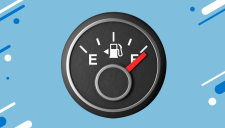Income protection: why it’s important

Last updated on 13th December, 2017 at 10:03 am
Being unable to work – and earn money – is a frightening prospect, especially if you have a family who depend on your income. Fortunately, there are ways to be financially protected. We investigate.
Meet Walter, a married 35-year-old male. Walter and his wife recently had a baby and he is currently the only breadwinner, working as a human resources manager at an IT company. On his way to work this morning, Walter was in a serious car accident. He fractured both legs and will have to spend more than 12 weeks in hospital, unable to work. Fortunately Walter has backup: a while ago he took out an income protection plan, a policy that protected his ability to earn a monthly salary. When you’re no longer able to work, whether it’s temporary as in Walter’s case, or permanent, an income protection plan kicks in and you still earn an income although you cannot work.
What are your options?
There are a number of income protection options, which cater for your specific needs and take into account what you can afford to pay monthly. Also considered are the various factors that can have an influence on your income. 1. Sickness Benefit This benefit is available to graduated and professional clients and is paid out when you are on sick leave for more than seven days. You can choose between payouts for seven days, 14 days and one month. This benefit will pay out as a monthly amount, regardless of whether income is still earned or not. 2. Temporary Disability Income Benefit This benefit is available to most clients and not only graduated or professional ones. It pays out if your inability to work results in a loss of income. You can choose the benefits with an appropriate waiting period to protect you during the first 24 months of disability. This benefit also includes a comprehensive list of defined claim events, such as joint replacements, fractures or ligament and other injuries, for which you will receive a specified number of payments, irrespective of whether you have a loss of income or not. 3. Extended Disability Income Benefit This benefit is also available to most clients, not only graduated and professional clients, and gives you continuous income protection until you retire. It protects you when you lose your income because you can no longer work. 4. Spouse and Child Protector Rider Benefits These benefits are in addition to the Sickness or Temporary Disability Income benefits. They provide you with financial assistance when you have to take time off work to take care of a sick or injured child or a spouse suffering from a severe illness. Likewise you may also want to take time off from work following the trauma of the death of a child or a spouse. 5. Overhead Expenses Protector This is a useful benefit for people who have their own businesses. It provides financial protection that covers overhead expenses of a business, such as salaries, when a key person is unable to work. 6. Death Income Benefit This benefit pays a monthly income to your nominated beneficiary in the event of your death. Your family will receive a monthly payment rather than a lump sum, which means they won’t face the unnecessary burden of reinvesting and managing a lump sum of money. In the past, the monthly contributions made towards income protection plans used to be tax deductible, but that is no longer the case.
By Liesl Peyper
Find out more about Sanlam’s Income Protection options – click here
Want to learn more?
We send out regular emails packed with useful advice, ideas and tips on everything from saving and investing to budgeting and tax. If you're a Sanlam Reality member and not receiving these emails, update your contact details now.
Update Now







